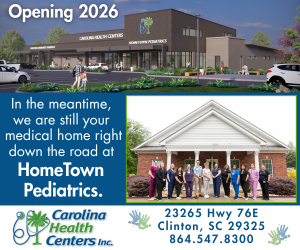Imaging Study Shows Stroke Patients Receive Successful Treatment Beyond Four Hour MAGIC WINDOW
September 7, 2012Perfusion imaging redefines widely-accepted treatment time frame for stroke
CHARLESTON, SC – September 6, 2012 – Practitioners who treat strokepatients now have proof that perfusion imaging can better determine whois and who isn’t beyond the magic window to restore blood flow to thebrain. Lead study author Aquilla Turk, D.O., MUSC InterventionalNeuroradiology co-director and neurosciences and radiology professor,described the study as a landmark turn in providing patients withtreatments they may not have had otherwise. Currently, the standard ofcare most providers use as a treatment criterion is the four-hour magic window.
This study definitively shows that perfusion imaging as a patientselection criterion for endovascular therapy is a successful evaluationtool, whether patients are presenting at three hours out from theirstroke or 11 hours, Turk said. Broadly speaking, these results couldtransform our approach to patient selection and ultimately may mean that we will be able to treat significantly more patients and reduce thedevastating burden of this disease on individuals and families.
Study results show that patients with ischemic stroke may besuccessfully treated with endovascular therapy well beyond the 4.5 hourtreatment window today considered standard by most neurointerventionalpractitioners. The multi-center study evaluated the use of computedtomography (CT) perfusion imaging, regardless of time from symptomonset, in selecting patients for endovascular treatment, a techniquewhich utilizes devices or clot-busting drugs directly at the problemsite in the brain to dispel clots and restore blood flow. CT perfusionimaging is used in combination with other imaging techniques todetermine which areas of the brain are irreversibly injured from astroke, and which areas are still alive, but at great risk. From there,practitioners can better decide who is still a candidate for treatment.
According to Neurosciences clinical chairman and neurosurgery professorSunil Patel, M.D., South Carolina had one of the highest mortality rates from stroke in the country about five years ago. Patel applauded thestrides the department made to recruit and retain some of the nation’stop stroke experts while bringing the infrastructure of the program upto speed. Within this short period, we have come to offer unparalleledstroke care in this state, and now have one of the most comprehensivestroke programs in the country. South Carolinians are finally seeinggreatly reduced stroke mortality rates and significantly improvedoutcomes after treatment, he said.
Study data collected from the Medical University of South Carolina(MUSC) in Charleston, Swedish Medical Center in Denver, Co., and theUniversity of Florida in Gainesville, showed that out of 247 patientsfor whom perfusion imaging was used, 42.5 percent demonstrated goodfunctional outcomes, which is comparable to results from all othersignificant trials to date which evaluated endovascular therapyconducted under eight hours. Notably, this latest study showed nosignificant difference in treatment outcome between patients treatedless than eight hours (42.8 percent) and those treated over eight hours(41.9 percent). Additionally, immediately following treatment,restoration of blood flow was accomplished in 76 percent of patients,with a higher success rate in those treated over eight hours (81.1percent) as opposed to those treated under eight hours (71.7 percent). All study subjects underwent mechanical thrombectomy, or treatmentutilizing devices to restore blood flow.
According to the American Stroke Association, approximately 795,000Americans suffer a new or recurrent stroke annually. Of that total,137,000 individuals die each year from stroke, making it the fourthleading cause of death. In 2010, Americans paid approximately $73.7billion for stroke-related medical costs and disability.
About MUSC
Founded in 1824 in Charleston, The Medical University of SouthCarolina is the oldest medical school in the South. Today, MUSCcontinues the tradition of excellence in education, research, andpatient care. MUSC educates and trains more than 3,000 students andresidents, and has nearly 13,000employees, including approximately 1,500 faculty members. As the largest non-federal employer in Charleston, the university and its affiliates have collective annual budgets in excessof $1.7 billion. MUSC operates a 750-bedmedical center, which includes a nationally recognized Children’s Hospital,the Ashley River Tower(cardiovascular, digestive disease, and surgical oncology), and aleading Institute of Psychiatry. For more information on academicinformation or clinical services, visit www.musc.edu. For more information on hospital patient services, visit www.muschealth.com


















